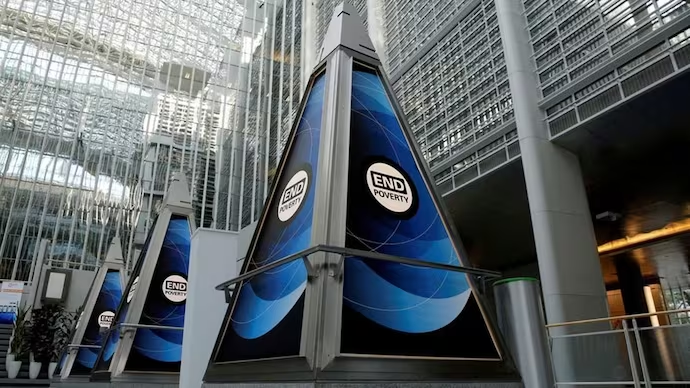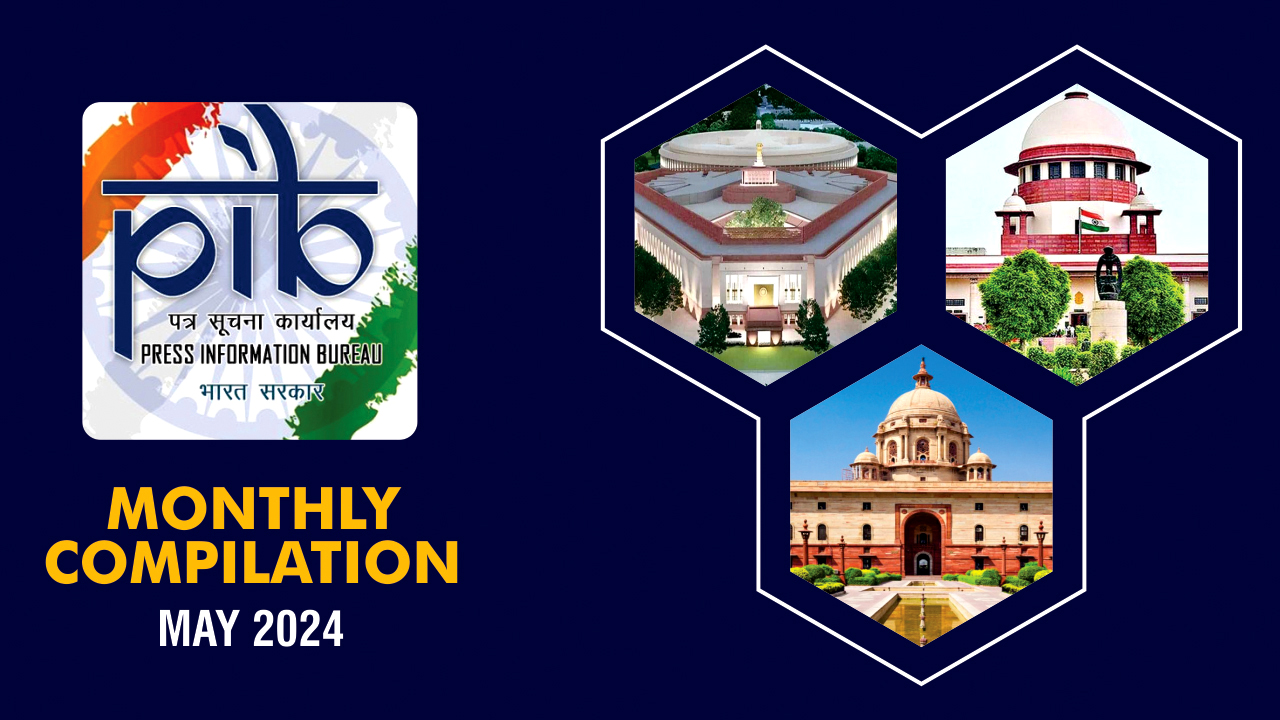Description

Copyright infringement not intended
Picture Courtesy: https://www.indiatoday.in/environment/story/world-bank-seeks-more-funds-to-address-climate-change-other-crises-2316801-2023-01-03
Context: A World Bank delegation visited Goa to discuss setting up India's first sub-national climate resilient green fund.
Key Highlights
- The delegation from the World Bank has arrived in Goa for talks with the state government to establish the first sub-national climate-resilient green fund, focusing on Goa's commitment to adopting renewable energy.
- Objective: The initiative aims to address Goa's push towards renewable energy adoption by creating a financial mechanism that supports carbon and climate-resilient investments.
- Partnership: The World Bank will collaborate with NABARD, SIDBI, and other partners to launch a blended finance facility. The partnership involves combining funds from the government, international development finance agencies, and the private sector to support Goa's green ambitions.
- Operational Structure: Once operational, a project management unit will oversee the fund, and Goa will submit proposals to secure funds for carbon and climate-resilient investments.
- Template for Other States: The Goa government sees this initiative as a template for other states in India. It could serve as an example for sub-national facilities across the country to adopt similar measures.
- Approval Process: Goa has submitted its proposal to Niti Aayog, and Chief Minister Pramod Sawant has met with Niti Aayog officials to obtain final approval from the Department of Economic Affairs to establish the fund.
- Sub-national Facility: The initiative is described as one of the first sub-national facilities of its kind in India, potentially setting a precedent for other regions to follow at the national level.
- Purpose: The fund is an outcome of Goa's 100% renewable energy plan, announced at the G20 Summit. The state government realized the need for finance to achieve the goals set out in this plan.
- Beneficiaries: The final beneficiaries of the fund are expected to be MSMEs, with funds being provided to promote the adoption of solar plants, electric mobility, and other climate change mitigation measures.
|
The World Bank is the biggest multilateral funder of climate investments in developing countries. The World Bank collaborates with the Green Climate Fund (GCF), the world's largest dedicated climate fund, in various ways:
●Acting as a trustee: The World Bank serves as a trustee for the GCF, managing its trust fund and providing administrative support.
●Implementing GCF projects: The World Bank acts as an accredited entity for the GCF, implementing some of its projects in developing countries.
●Partnerships: They collaborate on specific projects and initiatives to leverage expertise and resources for greater impact.
|
About Green Climate Fund (GCF)
- The Green Climate Fund (GCF) was established within the United Nations Framework Convention on Climate Change (UNFCCC). It functions as an entity of the Financial Mechanism, specifically addressing the needs of developing countries in their efforts to adapt to and mitigate the impacts of climate change.
- The GCF is headquartered in Incheon, South Korea. Governance is provided by a Board consisting of 24 members, overseeing the fund's activities.
- The GCF is recognized as the world's largest dedicated environmental fund. Its primary mission is to assist developing countries in both reducing greenhouse gas emissions and enhancing their capacity to respond to climate change.
Goal
- Support developing countries in achieving their Nationally Determined Contributions (NDCs), which outline their ambitious plans to reduce greenhouse gas emissions and adapt to climate change.
Target Audience
- The GCF primarily serves developing countries that are most vulnerable to climate change, including Least Developed Countries (LDCs), Small Island Developing States (SIDS), and African States. However, they also support other developing countries in achieving their climate goals.

Investment Areas
- Built Environment: This includes green buildings, sustainable cities, and climate-resilient infrastructure.
- Energy & Industry: This involves promoting renewable energy, energy efficiency, and clean technologies in various sectors.
- Human Security, Livelihoods & Wellbeing: This includes projects that address climate change impacts on food security, water resources, health, and displacement.
- Land-Use, Forests & Ecosystems: This focuses on protecting forests, promoting sustainable land management, and supporting nature-based solutions to climate change.
Approach
- Transformational planning & programming: This involves working with developing countries to develop comprehensive national climate strategies and plans that integrate mitigation and adaptation efforts.
- Catalysing climate innovation: The GCF invests in pioneering technologies, business models, and practices to demonstrate their viability and encourage wider adoption.
- De-risking investment to mobilize finance at scale: The GCF utilizes various financial instruments (grants, loans, guarantees) to make climate-friendly investments more attractive to private investors, thereby scaling up resources.
- Mainstreaming climate risks & opportunities: The GCF promotes tools and methodologies that integrate climate considerations into decision-making processes across various sectors, leading to more sustainable development pathways.
Key Principles
- Country-driven: GCF prioritizes country ownership by allowing developing countries to lead their climate action initiatives and project implementation.
- Open, Partnership Organization: The GCF works with a diverse network of over 200 Accredited Entities (e.g., banks, development agencies, NGOs) for project design and implementation, fostering collaboration and knowledge exchange.
- Range of Financing Instruments: The GCF offers a flexible combination of financial tools (grants, loans, guarantees, equity) to cater to diverse project needs and attract private sector investments.
- Balanced Allocation: GCF ensures balanced investment in both mitigation (reducing emissions) and adaptation (building resilience) efforts, with at least half of adaptation resources going to the most vulnerable countries.
- Risk-taking, Patient Capital: The GCF recognizes that innovative and transformative projects often carry higher risks. They are willing to take calculated risks and provide patient capital (long-term funding) to support early-stage projects and encourage innovation.
Challenges
- Urgency of Action: The pressing need to address the climate crisis requires swift and decisive action. Accelerated efforts are essential to meet climate goals and prevent further environmental degradation.
- Fulfilling Pledges: Developed countries have committed to providing USD 100 billion annually to support climate action in developing nations. However, there is a challenge in ensuring the fulfilment of these pledges, which is crucial for funding mitigation and adaptation projects.
Way Forward
- Utilizing Public and Private Funds: Implementing a blended finance approach involves combining public and private funds to leverage resources effectively. This strategy enhances financial support for climate initiatives and increases the overall impact of investments.
- Integrated Projects: The Green Climate Fund (GCF) emphasizes the importance of projects that address both mitigation (reducing greenhouse gas emissions) and adaptation (adapting to the impacts of climate change). This integrated approach ensures a comprehensive response to the challenges posed by climate change.

Conclusion
- The Green Climate Fund plays a critical role in global efforts to combat climate change by providing financial support for transformative projects, promoting sustainable development, and assisting developing countries in their transition to a low-carbon and climate-resilient future.
|
PRACTICE QUESTION
Q. Despite the Green Climate Fund (GCF) being the world's largest dedicated climate fund, some critics argue its impact on global emissions reduction has been limited. How can the GCF measure and demonstrate its effectiveness in achieving real-world climate outcomes, beyond just project completion and disbursement of funds?
Answer Structure:
●Start by briefly introducing the Green Climate Fund (GCF) and its role as the world's largest dedicated climate fund. Highlight the criticism that despite its size, some argue its impact on global emissions reduction has been limited.
●Discuss the importance of moving beyond project completion and fund disbursement to evaluate the real-world impact on climate outcomes.
●Emphasize the need for robust monitoring and evaluation mechanisms to track emissions reductions resulting from GCF-funded projects.
●Discuss the importance of evaluating the effectiveness of GCF in building climate resilience and adapting to the impacts of climate change.
●Advocate for a comprehensive impact assessment that considers not only project-specific outcomes but also broader systemic changes resulting from GCF interventions.
●Summarize the key points and reiterate the importance of measuring the real-world impact of the GCF beyond mere project completion and fund disbursement.
|










